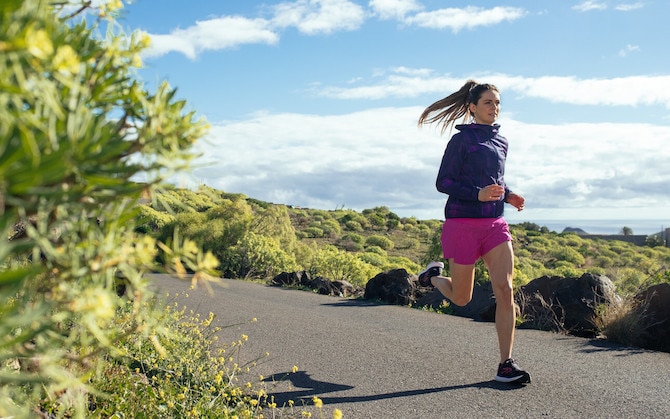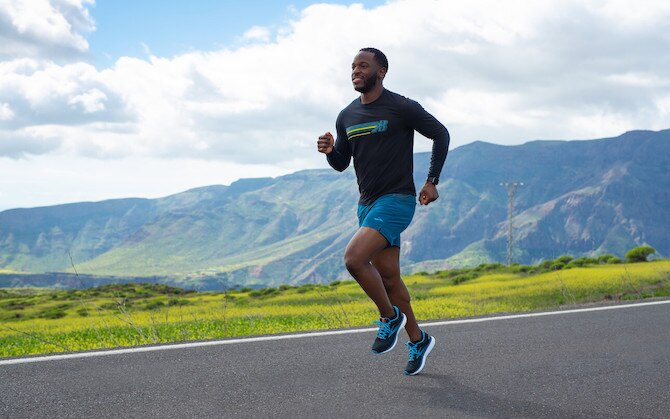Legs feel heavy when running? Here's how to lighten up.

If your legs feel heavy when running, it can feel like you're just dragging along. And for a newer runner, this sort of discomfort can be discouraging. But we've all been there (and don't have to stay there!), so here are some practical tips to help your legs recover and get you back to happy, springy runs.
Lead in the legs, dead legs, lazy legs. However you describe how your legs feel heavy when running, it can make even an easy run feel like a chore. It could even make you feel like you need to quit.
Heavy leg syndrome can be overcome, though, and physical therapist Adam David has provided some sound advice for fixing the feeling, which typically affects the larger muscles in your legs.
Give your body the fuel it needs.
Hydration not only powers us through our workouts, but it helps us to recover, too. According to Sports Medicine, even moderate water loss can impair a workout. Now, if you run and aren't properly hydrated and then run again, your body is still playing catch up.
David notes that water and electrolytes are necessary for keeping our legs feeling strong. Proper hydration, especially in the summer, can make or break your training and affect your performance. In addition, he recommends, "prioritizing anti-inflammatory foods to keep your legs feeling fresh." Some foods to incorporate include fatty fishes, berries, and avocados.
Optimize your blood flow and mobility.
Compression boots are optimal, but since the average person doesn't have access to them, David recommends improving your blood flow by putting your legs up a wall after a run. Foam rolling or using a percussion massage device can be useful as well. These tools can help loosen any muscle tightness or adhesions (bands of scar-like tissue that make your normally slippery muscles stick together).
Prioritizing a post-run mobility routine can also help kick-start your recovery and increase your range of motion. This includes core exercises and a proper cool down. If you're too tired to jog after a tough effort, consider walking to help aid circulation.
Another blood flow issue to consider is anemia. If you suspect you're low on iron, consult with your doctor to get some bloodwork done.

Make time for recovery runs.
Why are so many of us uncomfortable with easy runs? They serve a purpose, and any training program should have multiple easy runs built-in.
"Stringing too many hard efforts in a row leaves our muscles sore, tired, and fatigued, and puts runners at increased risk for injury," says David. "After a harder run — either a long run or a workout — we should take a day or two of recovery runs to allow our muscles to adequately recover." These runs should be at or below conversational pace, meaning you're able to have a conversation or sing along to your music during the run.
Know when to rest.
Lastly, David suggests paying attention to what happens to your form when the achy feeling sets in.
"If the achiness is so great that it changes your running mechanics, your body could be telling you to take some time off," he notes. While it may be tempting to push through, especially during a training cycle, this can set you up for taking more unwanted time off. "Obey the fatigue, since pushing through can set you up for more lost days of running due to increased risk of injury," David adds.
Everyone battles heavy leg syndrome at some time. It can feel like a slight setback, but with adjustments to your diet, stretching, and recovery routines, you can overcome and eliminate future occurrences.
Our writer's advice is intended for informational or general educational purposes only. We always encourage you to speak with your physician or healthcare provider before making any adjustments to your running, nutrition, or fitness routines.
